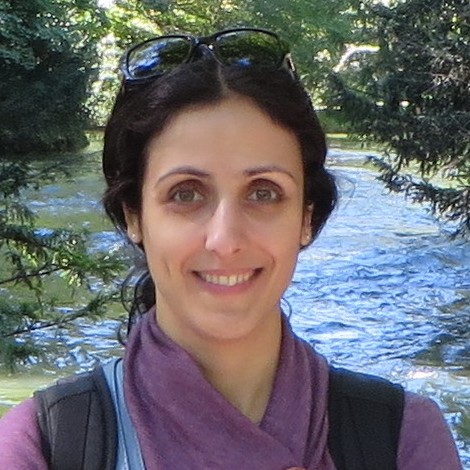About This Project
In this research project, we will use controlled biofouling experiments to quantify the progressive colonization of microplastics by microorganisms and the subsequent implications on their density, buoyancy, and aggregation with biogenic particles. Concurrently, we will use laboratory experiments on phytoplankton-zooplankton species pairs to investigate the consequences of aggregation of microplastics with phytoplankton on the uptake of microplastics by zooplankton.
Ask the Scientists
Join The DiscussionWhat is the context of this research?
Plastic particles are found in all marine and freshwater environments, including the polar regions and deep sea [1, 2]. It is estimated that over 20 million metric tons of plastics enter rivers, lakes, and oceans each year, a figure projected to reach 53 million metric tons by 2030 [3]. While all plastic particles pose a threat to the health of seawater and freshwater ecosystems, microplastics (< 5mm particles) are of particular concern [4] as they can easily interact with organisms and enter the food chain [5]. To understand the rate of uptake of microplastics (MPs) into the aquatic food web, we need to know (i) the abundance of MPs in seawater and freshwater, (ii) probability of encounter of MPs and aquatic organisms, and (iii) the impact of consumption of MPs by organisms.
What is the significance of this project?
Mitigating the impact of microplastics (MPs) on marine species relies essentially on the understanding of their large-scale transport, and their interaction with aquatic organisms at small scales. Aggregation of biofouled microplastics with phytoplankton and zooplankton (biogenic particles) creates a pathway for buoyant MPs to sink to deeper layers, and in some cases sequestration in sediments on the ocean floor. In addition, aggregation of MPs with biogenic particles can make them more bioavailable to microorganisms. This project is aimed at understanding the small-scale aggregation and consumption rates of MPs and will be integrated into our research program on understanding the fate of MPs in natural environments.
What are the goals of the project?
The first goal of this project is to quantify the impact of biofouling on the rate of aggregation of microplastics (MPs) with biogenic particles (BPs). The experiments will utilize multi-step milling process to produce MPs of desired shapes and sizes, followed by precise measurements of particle and aggregate sizes and surface charges. A high frame rate camera coupled with a laser enables rapid imaging of the evolution of particle aggregates. The second goal is to understand how zooplankton are directly affected by MPs when particles are ingested or egested or indirectly affected by MPs via their effects on phytoplankton. We will expose zooplankton to microplastics and aggregates similar to the ones used in the first part of the project.
Budget
The requested funds will help us focus on the specific phenomenon of microplastic aggregation that will be integrated into the bigger problem of quantifying the fate of microplastics in marine and freshwater systems. Within our research team we have larger externally funded projects that are aimed at: (i) developing models for the vertical transport of microplastics and proposing explanations for the missing of microplastics from ocean surfaces, (ii) developing technologies for tracking and capturing of microplastics, and (iii) understanding the impact of microplastics on marine and freshwater microorganisms. At the intersection of all these projects lies the question of how microplastics interact with other micron size particles in nature and if their aggregation has implications for their vertical transport, capturing, and rate of uptake into the food web.
Endorsed by
 Project Timeline
Project Timeline
We hope to start this project in summer 2024 and have some results by fall 2024. The project will be a part of our ongoing activities on microplastics research. The requested grant will allow us to buy some laboratory materials and supplies and pay the salary of a student who will perform the specific experiments.
Nov 18, 2024
Assign the project to a student
Nov 18, 2024
Project Launched
Nov 25, 2024
Purchase the laboratory supplies and materials, start running the experiments
Dec 09, 2024
Analyze the data and revise the experiments if needed
Dec 24, 2024
Finish the experiments and write a report or a paper on the rate of aggregation and consumption of microplastics
Meet the Team
Affiliates
Martin Thuo
I'm a professor of materials science and engineering interested in frugal science and sustainability. I teach classes in polymer processing and the fate of these materials have become a major interest for me. Understanding how to mitigate nano- and micro-plastic for improved blue economy is major challenge. My expertise in surface science, thermodynamics and materials chemistry will come in handy in this work.
Mona Rahmani
I am an Asssistant Professor at the University of British Columbia. My research focus is on understanding the motion of solid particles suspended in fluid flows. I am interested in understanding how microplastics are transported vertically and horizontally in natural water systems such as oceans, lakes, and rivers and also in smaller setups such as wastewater treatment facilities. I hope by understanding the aggregation, settling, and dispersion of microplastics we can propose strategies for tracking, capturing, and cleanup of microplastics.
Michelle Tseng
I am an ecologist and my research group investigates how climate change and microplastic pollution are altering our natural ecosystems. We focus on tiny organisms like plankton and insects because these creatures form the foundation of all aquatic and terrestrial food webs.
Johan Foster
For many years, I have been fascinated by the incredible ways nature builds and organizes itself, from the smallest molecules to vast ecosystems. This curiosity led me to explore the world of bio-inspired functional polymers and nanocomposites, where I could blend my fascination with nature's principles and my passion for engineering innovative materials. As an Associate Professor in the Department of Chemical and Biological Engineering at the University of British Columbia, I utilize bio-based materials for advanced applications.
Lab Notes
Nothing posted yet.
Project Backers
- 2Backers
- 100%Funded
- $5,155Total Donations
- $2,577.50Average Donation




